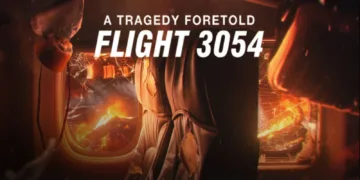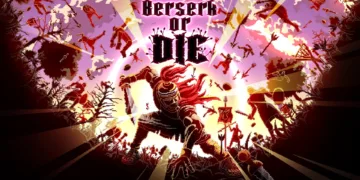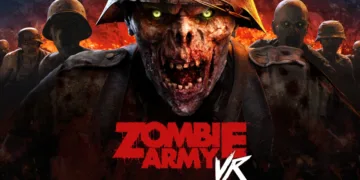Netflix’s latest reality offering, Battle Camp, represents an ambitious attempt to consolidate the streaming giant’s reality television ecosystem into a single competitive arena. Hosted by former NFL player Taylor Lewan, the series transplants 18 contestants from across Netflix’s reality portfolio—The Mole, Squid Game: The Challenge, Too Hot to Handle, The Circle, Perfect Match, and others—into a wilderness setting that splits the difference between summer camp nostalgia and survival competition.
The premise is deceptively simple: three teams of contestants (Eagles, Bears, and Wolves) compete for a $250,000 prize through physical challenges while managing the complex social dynamics that define modern reality programming. What distinguishes Battle Camp from its predecessors is its rotating cast system, where eliminated contestants are continuously replaced by new players, creating a narrative structure that resists traditional character development in favor of perpetual instability.
This approach reflects Netflix’s broader strategy of cross-pollinating its reality properties, banking on established personalities rather than developing new ones. The show operates as both competition and extended advertisement for the platform’s reality universe, a meta-textual gambit that raises questions about whether the format serves the storytelling or vice versa.
The Wheel of Fortune: When Strategy Meets Chaos
The heart of Battle Camp’s narrative structure lies in its elimination mechanism—a spinning wheel that determines contestant fate through a blend of strategy and randomness. The system operates on multiple levels: winning teams receive immunity, losing teams face consequences, and a wheel divided into 18 segments accumulates names through various means—team placement, punishment challenges, and peer voting.
This mechanic creates a storytelling paradox. Traditional competition narratives rely on meritocracy, where the strongest, smartest, or most strategic players advance. Battle Camp’s wheel introduces chaos as a narrative device, where luck can override skill and strategy. Names can appear multiple times on the wheel, increasing elimination probability, but the final spin remains random.
The format generates tension through uncertainty rather than skill demonstration. Contestants must balance performance in challenges with social positioning, knowing that excellence in one area cannot guarantee survival. This creates a different kind of strategic thinking—players must consider not just winning challenges but managing their wheel presence through alliance building and vote manipulation.
The evolution from three teams to two teams midseason represents a structural shift that alters the strategic landscape. Early episodes function as ensemble pieces with clear tribal divisions, while later episodes transition toward individual gameplay. This progression mirrors the format’s attempt to blend team-based reality shows with individual competition structures, though the execution feels more mechanical than organic.
Character Dynamics in a Rotating Cast System
The casting strategy reveals both the show’s strengths and limitations as a narrative vehicle. Drawing from Netflix’s reality ecosystem means contestants arrive with established personas and previous relationships, creating immediate drama but potentially limiting character growth. Tony from The Mole Season 2 brings his strategic ruthlessness, while Avori from The Mole’s first season attempts to mask her competitive nature—both carrying baggage from previous shows that influences their Battle Camp narratives.
The rotating cast system fundamentally alters how reality television storytelling typically functions. Traditional formats allow viewers to invest in character arcs over time, watching contestants evolve through challenges and social dynamics. Battle Camp’s constant player replacement creates a narrative environment where attachment becomes difficult and character development feels secondary to immediate drama.
Trey and Lorenzo from Squid Game: The Challenge represent the show’s most successful character imports, bringing established rivalry and strategic thinking that translates well to the new format. Their dynamic provides narrative continuity across episodes, demonstrating how cross-show relationships can enhance rather than complicate storytelling. Conversely, contestants like Gabi Butler from Cheer struggle to find their footing in a format that prioritizes social manipulation over athletic achievement.
The show’s character-driven moments emerge most effectively when contestants must balance their established personas with new strategic demands. The tension between authentic personality and game-playing creates the series’ most compelling dramatic beats, though these moments often feel fleeting given the format’s emphasis on elimination and replacement.
Production Mechanics and Narrative Effectiveness
Taylor Lewan’s hosting approach reflects the show’s tonal uncertainty—caught between the high-stakes drama of elimination-based competition and the casual atmosphere of summer camp activities. His NFL background provides credibility for physical challenges, but his comedic timing feels forced when addressing the series’ more manipulative elements. The hosting style mirrors the show’s broader struggle to establish a consistent narrative voice.
Challenge design reveals the production’s most significant storytelling weakness. Physical competitions lack the creative spark that distinguishes memorable reality television, often defaulting to basic obstacle courses and endurance tests. The repetition of challenge types within a single season suggests budget constraints that limit narrative possibilities. When storytelling relies heavily on competition outcomes, uninspired challenges become narrative dead weight.
The wilderness setting provides visual appeal but fails to function as a meaningful story element. Unlike survival shows where the environment becomes a character, Battle Camp’s natural backdrop feels decorative rather than integral to the narrative structure. The glamping accommodations further distance contestants from any meaningful environmental stakes.
The wheel elimination system, while unique, creates pacing problems that undermine narrative momentum. Episodes build tension through challenges and social dynamics, only to resolve through random chance rather than earned dramatic payoff. This structure works against traditional storytelling expectations, where setup should lead to satisfying resolution.
For Netflix reality devotees, Battle Camp offers familiar personalities in a new configuration, functioning as comfort food rather than innovative programming. Viewers unfamiliar with the platform’s reality universe will likely find the cross-references confusing and the character dynamics shallow. The show succeeds as a vehicle for established fan bases but fails to transcend its niche appeal or advance the reality competition format in meaningful ways.
Battle Camp is a reality competition series that premiered on Netflix on April 23, 2025. The show gathers 18 reality stars from various Netflix series and pits them against each other in a series of challenges to determine the “ultimate Netflix reality competitor”. The show is available to stream on Netflix.
Full Credits
Director: Zach Posner, Mathieu Weekes
Writers: No writers are mentioned in the provided IMDb credits list.
Producers: Hannah Ganio, Rebecca McLaughlin, Louise Peet, Charlie Irwin, Ashley Whitehouse
Cast: Taylor Lewan, Georgia Hassarati, Shubham Goel, Trey Plutnicki, Lorenzo Nobilio, Quori-Tyler Bullock, Polly Brindle, Avori Strib, Avori Henderson, Gio Helou, Louis Russell, Antonio Alejandro Castellanos
The Review
Battle Camp
Battle Camp represents Netflix's competent but uninspired attempt to maximize its reality television investment. The wheel elimination system provides novelty without depth, while the rotating cast prevents meaningful character development. Though functional entertainment for devoted fans of the platform's reality ecosystem, the series lacks the creative spark needed to elevate it beyond niche programming. The production feels more like a corporate synergy exercise than genuine storytelling innovation.
PROS
- Unique wheel elimination system creates unpredictability
- Strong personalities from established reality shows
- Decent production values and wilderness setting
- Cross-show relationships add immediate drama
CONS
- Luck-based eliminations undermine strategic storytelling
- Uninspired challenge design and repetitive competitions
- Rotating cast system prevents character development
- Limited appeal beyond Netflix reality show fans
















































